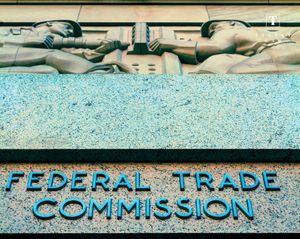Teaming agreements are more prevalent in federal contracting than in nearly any other industry. Contractors team with one another to meet the government’s technical and regulatory requirements and to complement each other’s capabilities while offering an optimal solution in terms of cost and performance. The Federal Acquisition Regulation (FAR) § 9.601 defines a contractor teaming arrangement as an arrangement in which a potential prime contractor teams with one or more other companies to have them act as subcontractors under a specified government contract or acquisition program. Depending on the terms and circumstances surrounding a particular procurement, contractors may enter into teaming agreements for various reasons. However, due to the vast network of existing relationships in the federal contracting industry, teaming disputes do not typically spill into the courts. However, when such disputes require adjudication, one of the primary queries before the court is the enforceability of any teaming agreements between the parties.
While teaming agreements entered in response to federal procurements involve considerations relevant to federal regulations, such teaming agreements are governed by state law. Thus, the law governing their enforceability varies depending on the State. Current jurisprudence in this domain illustrates that teaming agreements without the participants' consensus on certain key terms may not be enforceable upon the parties involved. Additional issues relating to enforceability may arise when the parties fail to reduce their agreement in writing or have neglected to execute the agreement either intentionally or through inadvertence. Despite these challenges to enforceability, teaming agreements are typically binding upon the parties. For a teaming arrangement to be enforceable, the parties must intend to enter into a binding contractual agreement, and the teaming agreement must sufficiently define objective criteria that a court may enforce. Determining the parties' intent to enter into a binding teaming agreement, especially in the absence of an executed subcontract, is a fact-specific inquiry, generally depending on the circumstances surrounding the procurement and the agreement. Courts may consider factors such as those outlined below to determine the parties' intent.
(1) The language of the agreement. Usually, the most important factor in determining the parties’ intent to be bound is the language of the teaming agreement itself. If the language of the agreement is similar to that of a binding contract, including terms such as “accepted” and “agreed to,” the court may find that the parties intended to be bound by the agreement.
(2) The context of the negotiations. Courts look to the overall context and content of the parties’ negotiations in response to the government’s requirements. For instance, the court may look at correspondence and other documents exchanged between the parties, the documents submitted to the procuring agency, and any negotiations concerning the execution of an eventual subcontract agreement.
(3) The existence of open terms. Courts are typically reluctant to find that parties intend to be bound by teaming agreements that include open terms, call for future approval, or express anticipation of preparing and executing binding documents at a later stage.
(4) Partial performance. If evidence suggests that the parties worked together to render even partial performance on the contract and such performance is contemplated in or consistent with the terms of the teaming agreement, courts will likely find that the parties intended to be bound by the agreement. While it is possible that assistance in preparing a responsive proposal in the context of a particular procurement may be considered under this factor – courts may also find that efforts expended in proposal preparation are merely a cost of doing business for which the parties cannot reasonably expect to be compensated.
(5) Custom of similar transactions. Finally, depending on the teaming agreement, a reviewing court may consider the government contracts industry as a whole and determine that it is customary when bidding on a government contract for a subcontractor to assist the prime contractor’s bid submission in return for the prime contractor’s promise to award a subcontract.
Ultimately, determining the enforceability of a teaming agreement requires an analysis of the parties’ intent to be bound in the overall context of the procurement and the ability of the agreement to sufficiently define objective criteria for enforcement. Therefore, it is crucial that when contractors enter into teaming agreements, they extensively negotiate and review the terms of the agreement, reduce it to writing, and duly execute it. The terms of any standard teaming agreements should be reviewed to ensure they reflect the parties’ needs and expectations regarding the procurement at issue. Finally, both prime and subcontractors should always conduct adequate due diligence reviews and be cognizant of any state-specific laws impacting their agreements to minimize the potential of future disputes and avoid roadblocks to the enforceability of their teaming agreements.
This Federal Procurement Insight is provided as a general summary of the applicable law in the practice area and does not constitute legal advice. Contractors wishing to learn more are encouraged to consult the TILLIT LAW PLLC Client Portal or Contact Us to determine how the law would apply in a specific situation.





